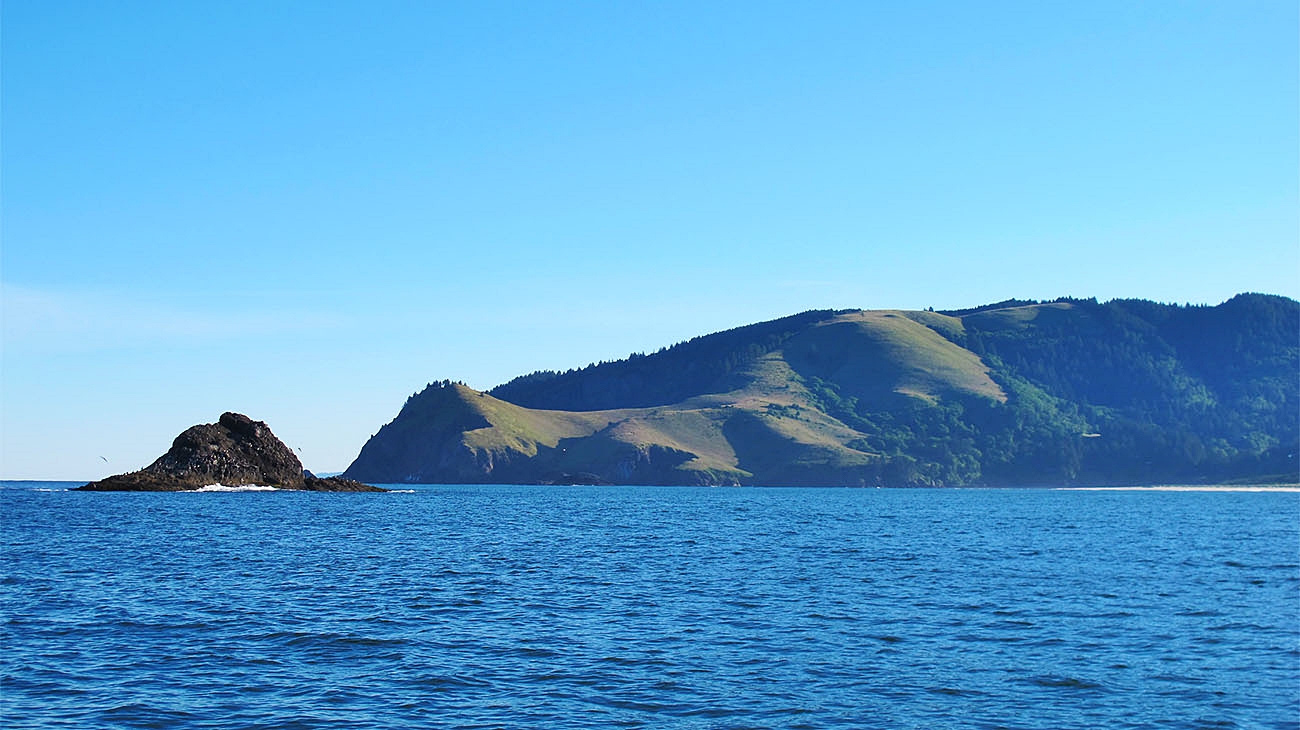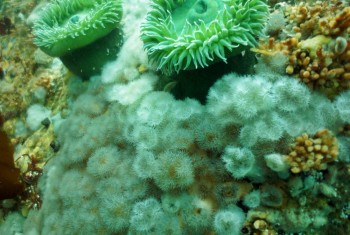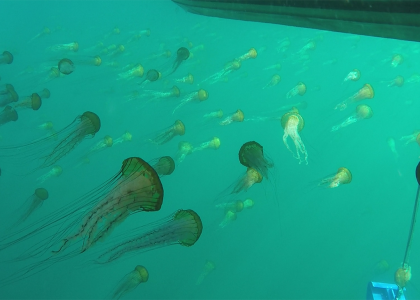The Cascade Head Marine Reserve is located off the central Oregon coast, stretching between the Cascade Head headland and Lincoln City. The site includes a marine reserve surrounded by three Marine Protected Areas (MPAs).

Marine Reserve
No take of animals or seaweeds. No ocean development.
MPA
No ocean development. Some fishing activities are allowed. See the site specific rules here.
What Makes Cascade Head Unique

Beneath the Surface
Rocky intertidal habitats are found along the shore on the north end of the marine reserve. Here you’ll find invertebrates such as mussels, sea stars, and snails as well as a variety of seaweeds. Underwater, the reserve includes the north segment of the Siletz Reef. This is an extensive rocky reef home to many species of groundfish such as canary rockfish, invertebrates such as giant plumose anemones, and seaweeds. In the North MPA, the Salmon River flows out into the ocean providing a freshwater input into the marine environment. The area around Cascade Head is a major upwelling center that creates productive waters that influence areas to the south.
From Land
Visitors have many opportunities for wildlife viewing and other outdoor recreational activities in and around this area. Nearby parks include Roads End and Knight Park. Hiking trails atop Cascade Head afford views overlooking the site. Much of the land around Cascade Head and the Salmon River is protected. Nearby towns and ports include Pacific City, Otis, Lincoln City, Depoe Bay, and Newport.
Planning a Visit?
For more Cascade Head activities, including hikes and viewpoints, visit this activity guide to plan your trip.
| Harvest Restrictions Began | January 1, 2014 |
| Monitoring Began | 2012 |
| Size | Reserve: 25 sq km (9.7 sq mi) MPAs: 60 sq km (23.1 sq mi). |
| Depth Range | 0-50 m (0-164 ft) |
| Habitats | Emergent rocks, large boulders, and flat bedrock extending out into deeper waters. Soft bottom habitats in shallower areas. Rocky intertidal habitats. |
| Habitat Connectivity | Rocky reef habitats extend beyond the reserve. |
| Prior Fishing Pressure | High groundfish effort, moderate salmon and shoreside effort (crab, groundfish, surfperch, intertidal harvest), low crab effort. |
| Monitoring Comparison Areas | Schooner Creek and Cavalier encompassing the middle and southern sections of the Siletz Reef. |
Design & Placement Matter
The ODFW Marine Reserves Program uses different monitoring tools tailored to each of Oregon’s marine reserves based on the reserve’s size, habitats, depths, prior fishing activities, and other unique characteristics of each reserve.
The Cascade Head Marine Reserve includes complex rocky reef habitats, and experienced relatively high levels of fishing pressure on groundfish before closure. The wide variety of habitats and depths in the reserve provide protections to an assortment of previously harvested fish species. The rocky reef habitats protected within the reserve also extend further south into the South MPA and the comparison areas of Schooner Creek and Cavalier.
Sampling Approach The design and placement of the marine reserve at Cascade Head allows us to evaluate over time how marine species respond to reserve protections — no fishing — compared to areas still open to fishing.
![]()
We are monitoring both inside the reserve and outside the reserve in “comparison areas” still open to fishing with similar habitats, depths, and fishing activity. We began sampling two years prior to the reserve being closed to fishing to identify initial conditions in the marine reserve and comparison areas and will continue sampling into the future to track how these areas change over time.






















